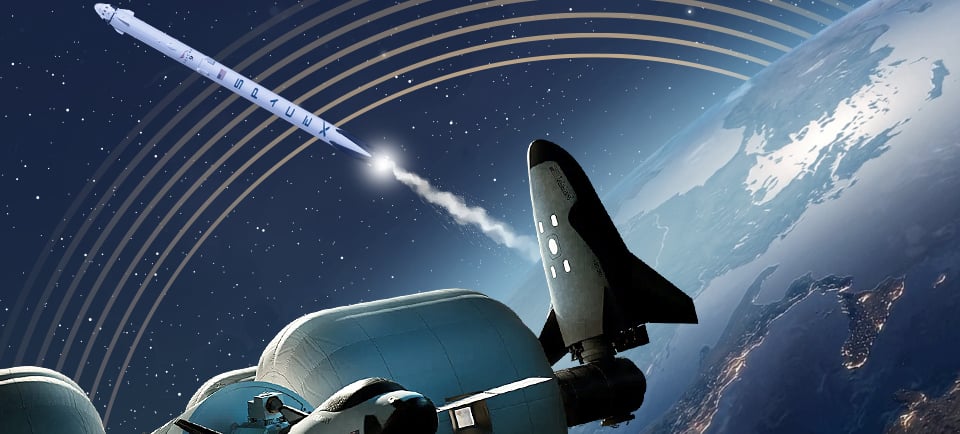Do You Know Which Space Missions Captured the World’s Imagination in 2025
#SpaceMissions2025, #NASAISRO, #Tianwen2, #EuropaClipper, #SpaDeX, #AxiomMission4, #DreamChaser, #SpaceRider, #DoYouKnow, #SpaceExploration, #Space, #Space Missions
TECH & SCIENCE
8/4/20252 min read


The year 2025 rapidly transformed the space landscape, with missions from national agencies and private companies pushing exploration, innovation, and scientific discovery—galvanizing global attention. From Moon landings and asteroid explorations to Earth observation and space tourism, these missions showed how accessible and exciting space has become. Here are the ones that truly made headlines.
1. NASA’s SPHEREx: Mapping the Universe in Infrared
Launched in February, NASA’s SPHEREx mission began creating a detailed all-sky infrared survey—capturing spectra of over 450 million galaxies and 100 million stars. Designed to trace the origins of the universe and detect water and organic molecules in star-forming regions, SPHEREx represents a new level of cosmic cartography.
2. NASA-ISRO NISAR: Earth’s Monitoring Satellite
The joint NISAR satellite launched on July 30, 2025, is equipped with dual-frequency radar to map Earth's surface movements with centimeter accuracy. From glacier melting to seismic shifts and agricultural monitoring, NISAR holds immense importance in climate change science and disaster preparedness.
3. Axiom Mission 4 (Ax‑4): Private Astronaut Flight to ISS
Axiom Space—powered by SpaceX Falcon 9—sent four crew members (including India’s Shubhanshu Shukla) to the ISS on Ax‑4 in June. This mission showcased private missions rising to prominence in human spaceflight, with international collaboration and commercial goals at the forefront.
4. Intuitive Machines IM‑2 and Blue Ghost Missions: Lunar Exploration
Under NASA's CLPS initiative, Blue Ghost and Intuitive Machines’ IM‑2 landers delivered scientific payloads to the Moon’s south pole, including drilling for subsurface ice. These missions aim to directly support Artemis objectives and strengthen public-private lunar exploration.
5. China’s Tianwen‑2: Asteroid and Comet Sample Return
In May, China launched Tianwen‑2 to collect samples from a near-Earth asteroid (Kamoʻoalewa), then proceed to a comet (311P/PANSTARRS). This bold dual mission highlights China's expanding leadership in deep-space exploration and planetary science.
6. ESA’s Space Rider: Reusable Orbital Spaceplane
Europe’s Space Rider performed its first uncrewed orbital test flight in mid‑2025. This reusable vehicle carries scientific experiments in microgravity and tests telecom, robotic tools, and payload recovery—marking progress in low-cost robotic space access.
7. ISRO’s SpaDeX: India’s Historic Docking Test
With its Space Docking Experiment, ISRO made history in January by docking two indigenous satellites in orbit—demonstrating autonomous rendezvous, docking, and in-space power transfer capabilities. This achievement places India among only four countries capable of such complex operations.
8. NASA’s Europa Clipper: On the Way to Jupiter’s Moon
Launched in late 2024 and using a Mars gravity assist in March 2025, Europa Clipper is now en route to Jupiter. With scientific instruments aboard, it will fly by Europa in search of a subsurface ocean and signs of habitability—one of our best bets in the ongoing quest for extraterrestrial life.
9. China’s Tianzhou‑9 Cargo Ship to Tiangong
On July 14, Tianzhou‑9 docked with China’s Tiangong station—delivering record payloads and essential supplies. This mission underscores China’s growing capabilities in sustaining a long-term human presence in orbit.
10. Dream Chaser: Sierra Space’s First Cargo Spaceplane
Sierra Space’s uncrewed Dream Chaser vehicle undertook its first ISS resupply mission in May 2025. Designed to land on a runway like a conventional aircraft, Dream Chaser opens new possibilities in reusable cargo transport and runway-based recovery.
Conclusion
In 2025, space missions captured the world’s imagination not simply through rocket launches, but through new forms of space access, scientific breakthroughs, and international collaboration. From asteroid samplers and Earth-mapping radars to India's human entry into orbit and private spaceflights to the ISS—this year redefined how we explore, monitor, and aspire beyond Earth.
Knowledge
Empowering minds with reliable educational content daily.
Newsletter Signup
© 2025 DoYouKnow. All rights reserved.
Stay Ahead of the Trends – Join Our Newsletter
